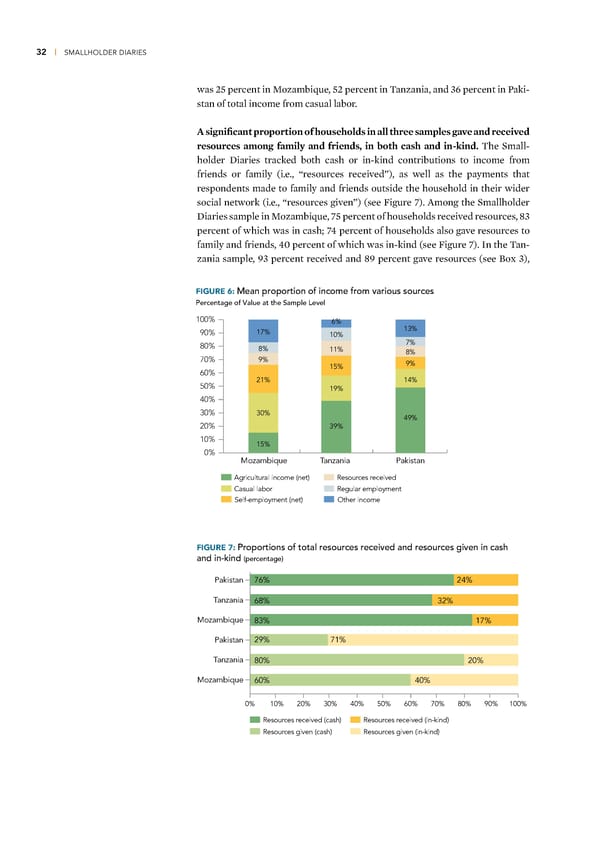32 | SMALLHOLDER DIARIES was ‘” percent in –o—ambiue, ”‘ percent in Œan—ania, and Ÿ¢ percent in ai- stan of total income from casual labor „ significant proportion of households in all three samples gae and receied resources among family and friends, in both cash and in-ƒind Œhe Small- holder ‰iaries traced both cash or in-ind contributions to income from friends or family (ie, “resources received”), as well as the payments that respondents made to family and friends outside the household in their wider social networ (ie, “resources given”) (see igure •) ˆmong the Smallholder ‰iaries sample in –o—ambiue, •” percent of households received resources, ¡Ÿ percent of which was in cash •“ percent of households also gave resources to family and friends, “’ percent of which was in-ind (see igure •) €n the Œan- —ania sample, žŸ percent received and ¡ž percent gave resources (see £ox Ÿ), FIGURE 6: Mean proportion of income from various sources Percentage of Value at the Sample Level 100% 6% 90% 17% 10% 13% 80% 8% 7% 11% 8% 70% 9% 9% 60% 15% 50% 21% 14% 19% 40% 30% 30% 49% 20% 39% 10% 15% 0% Mozambique Tanzania Pakistan Agricultural income (net) Resources received Casual labor Regular employment Self-employment (net) Other income Proportions of total resources received and resources given in cash FIGURE 7: and in-kind (percentage) Pakistan 76% 24% Tanzania 68% 32% Mozambique 83% 17% Pakistan 29% 71% Tanzania 80% 20% Mozambique 60% 40% 0% 10% 20% 30% 40% 50% 60%870%90% 0% 100% Resources received (cash) Resources received (in-kind) Resources given (cash) Resources given (in-kind)
 Financial Diaries with Smallholder Families Page 44 Page 46
Financial Diaries with Smallholder Families Page 44 Page 46